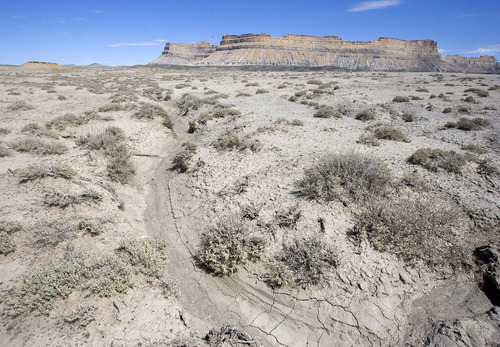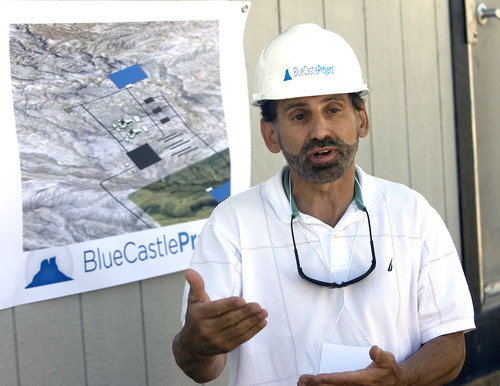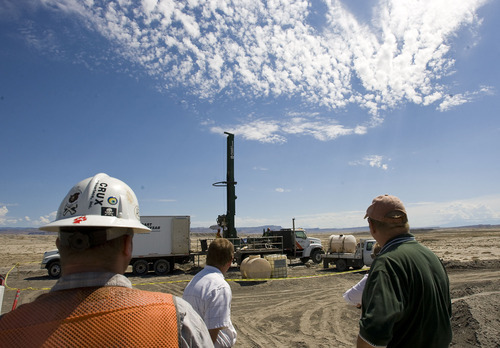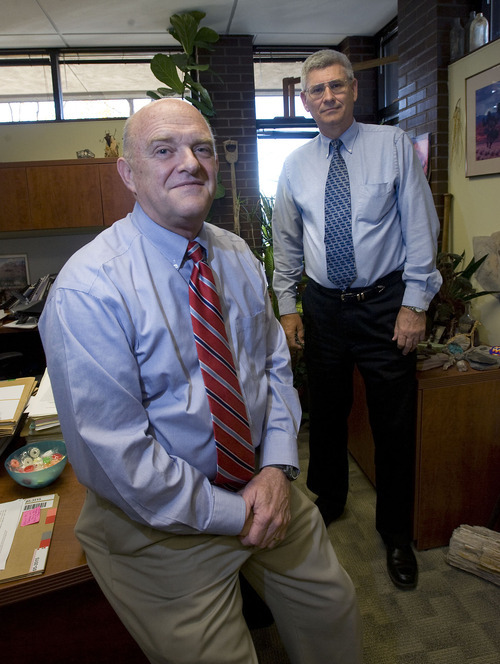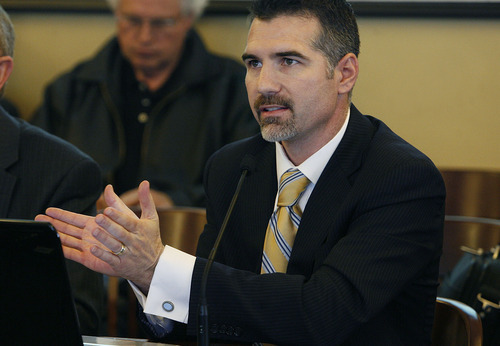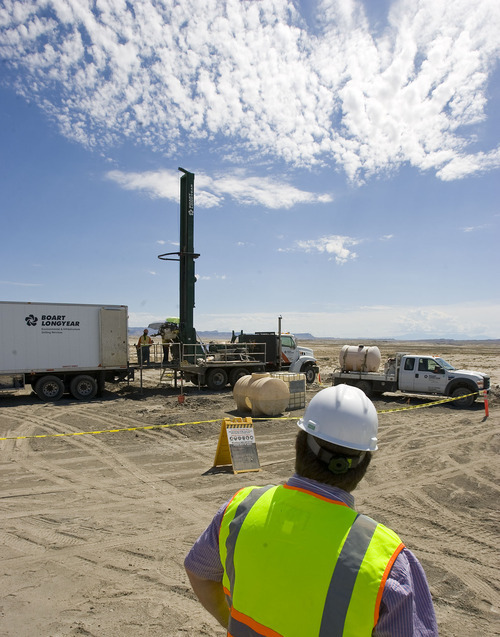This is an archived article that was published on sltrib.com in 2012, and information in the article may be outdated. It is provided only for personal research purposes and may not be reprinted.
State Engineer Kent Jones is sticking with his decision to funnel Colorado River Basin water to what would be Utah's first nuclear power plant. And, in doing so, he clears the way for a court to consider if his original decision was right.
Jones said Tuesday he would not revisit his decision last month to give Blue Castle Holdings the right to develop 53,600 acre-feet of water to cool its proposed two-unit nuclear plant despite "mischaracterized information" that he incorporated into that decision.
"Since my conclusion regarding the financial ability of the applicants to construct the proposed works was not based on the mischaracterized information, however, my opinion remains unaltered," said Jones in a letter to the groups that had asked him to reconsider his decision.
"The applicants have demonstrated a financial ability to complete the proposed works commensurate with this stage of a process that ultimately seeks to put [the water] to beneficial use."
It took little time for opponents seeking a do-over to condemn the decision. "The lack of scrutiny the [Gov. Gary] Herbert Administration has shown towards this nuclear reactor scheme is inexcusable," said Matt Pacenza, policy director of the Healthy Environment Alliance of Utah. And he suggested that Tilton's $5,000 contribution to the governor's campaign account in November had some influence on the decision.
HEAL, the Sierra Club, and Moab-based groups Uranium Watch and Living River had said there were a number of reasons why Jones was wrong when he originally approved the Blue Castle water. For instance, they contended the power plant would harm the stream environment, interfere with the rights of downstream users and that the $13 billion-plus project's financial plan is flimsy. But Jones did not address any concerns save the finances.
As to those, the state engineer acknowledged — as first reported by The Tribune last month — that the applicants had dropped a $30 million equity financing deal with LeadDog Capital, a New York hedge fund accused by the U.S. Securities and Exchange Commission of running a scam. Jones had mentioned that as proof of Blue Castle's "financial ability" in his Jan. 20 order granting the water.
In that original order, he also mentioned $72 million in project funding associated with 17 utilities representing 4,500 megawatts of electricity demand. Jones on Tuesday referred to that as "mischaracterized information," but asserted that it had no bearing on his conclusion.
Sarah Fields, who wrote the reconsideration request for Uranium Watch, suggested Jones was "over his head" on the financial questions and "under a lot of pressure politically" to reaffirm his earlier decision.
"The next step, obviously, is judicial review of the state engineer's decision," she said.
Fields would not say if her group would go to court, but she did point out that the project still faces an in-depth review as part of its U.S. Nuclear Regulatory Commission's licensing.
In the second phase of the NRC's review, for what is called a "combined operating license," the company will have to provide a detailed plan for how it hopes to raise the entire sum needed to construct the plant, which is estimated at between $13 billion and $16 billion. But the company is still a year away from the first stage of NRC's licensing review, the early site permit.
"It's definitely going to be a long, involved process," Fields said.
Anyone who objects to Jones' now-final ruling has 30 days to take the case to state court, where the evidence — and not Jones' decision — would be the basis for a ruling.
On Tuesday, Tilton said he was not surprised by Jones' decision.
"As we assumed," he said, "we still believe — and it appears the state believes — we fully complied with the law. I really wasn't worried about it in the first place."
Blue Castle leased the water rights for Green River water from Kane County and San Juan County Water conservancy districts. All of the water would be used by the two, 1,500 megawatt reactors for cooling, and none of it would go back into the river. Currently owned by the state School and Institutional Trust Lands Administration and being developed as an industrial park by Emery County's economic development office, the plant site near the intersection of Interstate 70 and State Road 6 is about six miles west of the Green River.
Twitter: judyfutah —
Court challenge
If the Blue Castle case does end up in court, it could be the first time a Utah law enacted last year by the state Legislature and Gov. Gary Herbert would be used.
The law applies to anyone challenging a final decision by the School and Institutional Trust Lands Administration, the Utah Department of Transportation or the Utah Department of Natural Resources — which oversees the State Engineer's Office.
It requires plaintiffs to put up a bond large enough to cover the entire value of a project if they seek a court stay or an injunction of a project approved by those agencies. The bond requirement does not come into play just for filing an appeal.
Rep. Mike Noel, a Kanab Republican who also serves as executive director of the Kane County Water Conservancy District, sponsored the bill creating the bond requirement, HB399, in last year's legislative session.
Aaron Tilton, Blue Castle's president and CEO and a former state representative for the Springville area, originated the idea during the 2006 Legislature with his HB100. At the time, he was working on a coal-fired power plant planned for Sigurd that was successfully challenged all the way to the Utah Supreme Court. —
Online
O To see the state engineer's final ruling, go to: bit.ly/yBB4RE
To see the original orders allowing Blue Castle water rights, see the special section on the Division of Water Rights Web page. > waterrights.utah.gov


